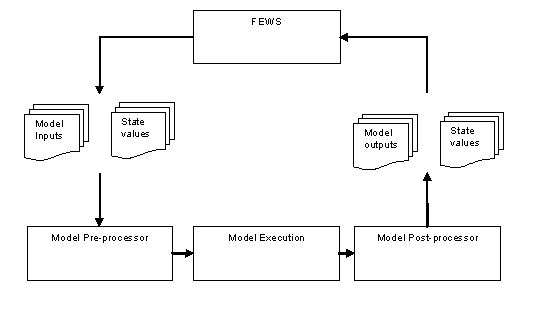Interactive editing of model states
Several operational forecasting systems utilise conceptual hydrological models for calculating the response of a catchment to rainfall. These models typically contain a number of parameters and state variables. A common requirement within the forecast process is the updating of state variables so that the results of the models is closer to the observed behaviour. The updating of states on the basis of observed errors is often referred to as data assimilation.
There are methods available that allow for the updating of states algorithmically, including for example Kalman Filters, empirical state correction methods etc. Another approach is the direct updating of state variables through manual intervention.
The approach taken in that state variables are considered as time series of variables and FEWS handles these as it does any other time series. The evolution of state variables can then be easily plotted against time as can for example the time series of resulting discharge. When a state variable needs to be amended, the changed values are saved as non-equidistant values at the time of the change. When running the model these values are imported into the model and at the time indicated used to overrule the value calculated internally.
To be able to use the state modifiers functionality, the adapter to the model for which the states are to be modified must have the ability to take in the time series of amended values and overrule those used in the internal state. Additionally the model and its adapter should be able to export the values of calculated state variables as a time series. The figure below illustrates the exchange of time series of model inputs & state values to the external model, as well as the return of model outputs and state values.
